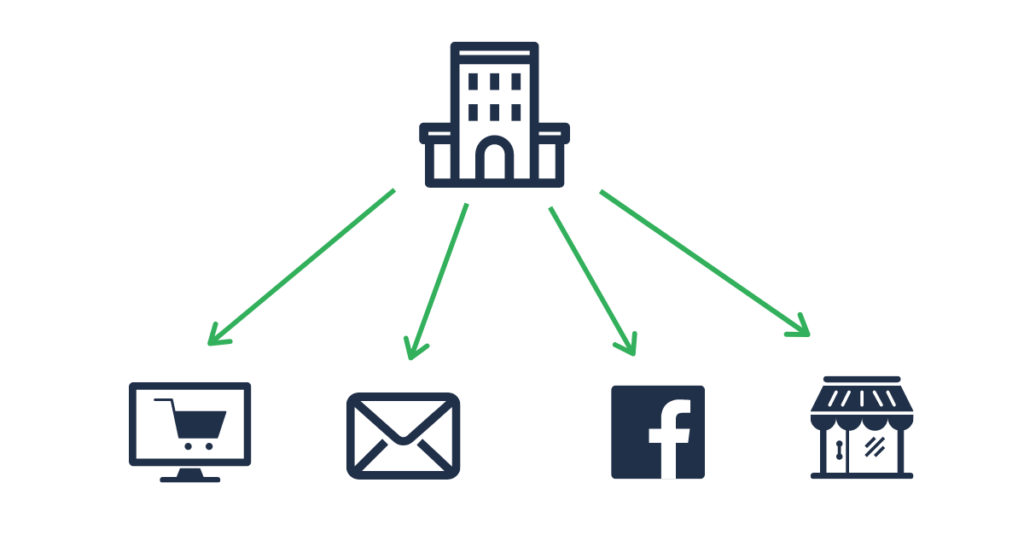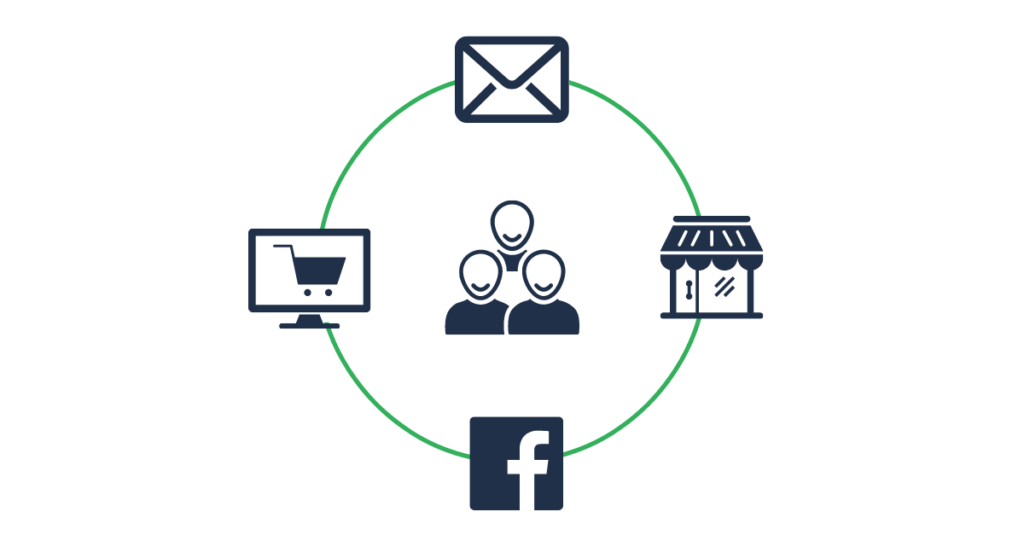Over the past decade or more, traditional retail has been flipped upside down. There’s been the rise and influx of online sales channels like eCommerce, online marketplaces, apps, popup shops, in-store experiences, and now social commerce. The rise of online selling and new technology has made it easier than ever for brands to reach customers in different channels.
But, how do you approach a landscape like this? How do you sell and market across multiple channels? What channels should you sell on? How do you balance online and offline experiences? What technology should you invest in?
No matter what it’s called— multichannel, omnnichannel, or another name — retail experts and brands recognize that merchants need the right strategy to meet the expectations of today’s consumers who search and shop among a handful of channels.
But, the true meaning and distinction of these strategies can become a bit confusing, especially since they continue to evolve over the years. To help you, this article breaks down each strategy’s meaning today and how you can benefit from it.
Omnichannel vs Multichannel: What’s the Difference?
Today’s customers search for and buy products across multiple channels— whether it’s your webstore, an online marketplace, brick-and-mortar, or social media. And, customers who display these habits are more valuable.
In fact, multi-channel shoppers have a 30% higher lifetime value than those who shop using only one channel. They can also spend more on average both in-store (4%) and online (10%) than single-channel shoppers.
At their core, both multichannel and omnichannel strategies focus on selling to customers via multiple channels (online and offline), but that’s where their similarities end. Each strategy is distinct in their approach to deploying a brand across multiple channels and what the resulting consumer experience is like. Let’s see how.
What is Multichannel?
A multichannel strategy is marketing and selling products in more than one place. It could be all online channels like listing your products across dozens of marketplaces and your own webstore. It could also mean mixing physical stores and online channels. The main goal is to expand your reach to new audiences and to market and sell to consumers in their preferred shopping channels.
72% of consumers say they would rather connect with brands and businesses through multichannel marketing.
When you think of multichannel, you can picture a brand at the center pushing their marketing messaging and product out to any number of channels they see as important.

For any business, a multichannel strategy is a smart way to expand your reach and target new customers. You can view each channel as an opportunity to communicate and sell your products. You can also run a handful of platforms that support each channel like an eCommerce platform, POS system, or a marketplace account.
However, multichannel strategy may only get you so far in the long run. It can force sellers to treat each channel as separate. It assumes that a consumer will search online to buy a product from your website. Or, a consumer will walk in your store to buy without looking online first. It also focuses on maximizing sales in each channel (instead of channels influencing each other for purchases).
Treating sales channels as separate though can lead to a disjointed customer experience. Your customer has to interact with information in one channel only, which can be frustrating. They’re also can be discrepancies between channel experience.
This shortcoming of multichannel strategy is what leads many forward-thinking leaders to evolve into a omnichannel strategy
What is Omnichannel?
An omnichannel strategy focuses on creating consistent and uniform experiences across multiple online and offline touchpoints. Channels aren’t treated as separate, but instead work alongside one another to create a fluid customer experience from one device to the next or sales channel.
90% of customers expect consistent interactions across channels.
When omnichannel was still a new concept, it was often criticized as a strategy to simply be everywhere. This came about since the word “omni” means “all.” Like multichannel, omnichannel doesn’t mean to sell everywhere— only where your desired customers are. Unlike multichannel though, omnichannel focuses on creating a unified experience across touchpoints.
At its core, omnichannel requires a deep understanding of your customers. Why do they care about your brand? How do they want to interact with it? How do you anticipate and remove any friction points in their customer journey? How do customers interact with this one channel over another?
Focusing on the customer at the center can lead to an overall better experience. You’ll engage with customers across different channels, while also creating a unifying message on each one. Instead of operating channels in silos, you allow them to influence and support each other for a holistic experience.

Types of Omnichannel Experiences
Omnichannel strategies blend channels for a cohesive customer experience like:
- Displaying real-time inventory availability online for by store location
- Using a mobile app in-store for product assistance and coupons
- Placing an online order for an out-of-stock item in-store to ship to a person’s home
- Tracking reward points across online and offline purchases
- Scanning in-store items to see more options online
- Allowing a consumer to see their saved cart via mobile and desktop
- Displaying ads based on items saved in cart online
However, some sellers can still approach omnichannel with channel-specific thinking. While you do want consistency from one touchpoint to the next, it doesn’t mean that all touchpoints should be the exact same. Interactions can be different, while also making sense together.
Omnichannel vs Multichannel Experiences: Where to Start
Most businesses start with a multichannel strategy. It’s a smart way to explore and expand to multiple channels to reach your customers (i.e. selling on Amazon, Walmart, and your own website).
An omnichannel strategy is an evolution from multichannel. And the transformation doesn’t happen overnight. It takes significant resources (infrastructure, tech, people, and processes) to orchestrate a true omnichannel strategy that tracks and responds to customer actions across all your channels. For example, when a customer engages with your brand in one channel, the rest of your channels need to be aware and update accordingly. A common example of this is when a customer is shopping in-store and likes an item, but they don’t have the size or color the customer wants at that location. To make the customer happy and not miss out on the sale, the salesperson finds the product the customer wants in a warehouse or another store, the customer purchases the item in-store, and it’s sent to them with free shipping. While this may seem simple enough, it requires a ton of technology and infrastructure to pull off.
Omnichannel is a long-term strategy that takes thoughtful planning. You have to build up to it and intricately integrate your channels and teams to support it. The result? A fluid and cohesive experience that can increase sales and customer satisfaction.
89% of customers are retained by companies with omnichannel engagement strategies
For inspiration, take a look at these brands known for their omnichannel experiences:
- Target — Mobile app experience
- Home Depot — Buy online, pick up in-store capabilities
- Starbucks — Mobile app experience and loyalty program
- REI — Print, online, and mobile shopping experiences
- Sephora — Ability to digitally test products in-store and shop online while in-store


